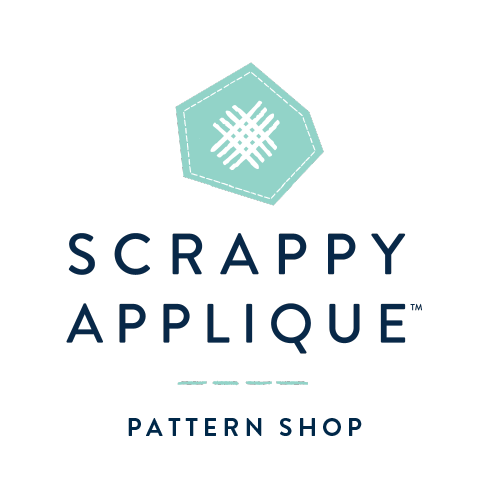Have you ever been making a quilt and wish you could change something about the pattern, but didn't know exactly how to do the math to adjust it, or were worried you'd end up messing everything up?
Or maybe you've been inspired to make a particular design or shape, but was unsure how to go about fully drawing it out and turning that into a pattern of your own?
My darling, you do not have to be a professional designer to modify or design your own quilt.
You don't have to be tech savvy or purchase expensive software.
You don't have to be a master illustrator.
There are a ton of different ways to modify existing patterns or design from scratch your own patterns that anyone can master.
You can design your own paper piecing pattern, or appliqué pattern, block pattern-- whatever the technique, you can design for it.
Here are some tips to get you started:
1. Keep an inspiration log

This could be a Pinterest board, a cork board in your sewing room, a sketchbook, a journal or document on your computer or phone, an album on your phone with photos-- whatever is the easiest way for you to capture ideas, that's what you want to use.
Anytime you see something that grabs your eye, even if you don't know instantly how you might use the inspiration, capture that and place it in your log. Maybe you are on an evening walk and see a gorgeous garden, and snap a photo of the fabulous shade of orange on a rose. Perhaps you're traveling and see a really unusual piece of architecture and snap a photo of the silhouette. Maybe you're reading an article that references pointillism, and you jot down the idea of a pointillist-style quilt.
Inspiration can strike at any moment. Your job is to have your mind and eyes open to spot it, then capture it in whatever way is easiest for you. Over time you'll have a nice collection of ideas and inspiration to go to when you're designing your next quilt.
2. Just begin
The biggest thing that will get in your way is that most malicious 4 letter word-- fear. Fear is going to try to stop you from starting because-- it might look terrible. Fear is going to say-- what if it doesn't work out and I've just wasted a bunch of time and fabric? Fear is going to say, "Who the heck do you think you are? You're not creative. You can't do this."
Feel the fear and do it anyway.
It doesn't have to be perfect. It won't be perfect. Perfect is boring anyway. Just begin. Don't worry about what the end result will be, it doesn't matter; just begin. It might turn out to be a hot mess-- that's okay. Every quilt designer has a basket or closet full of "experiments" that didn't pan out. The only way to get to the gold is to make a lot of things. Some work out beautifully. Some are disasters. All will teach you something. All will make you grow in some small way. Just begin.
3. Play with different drafting methods

There is no "best" way to design a quilt, but there is a "best" way for YOU to design a quilt. Maybe you are a pen and paper kind of gal, if that's the case, grab yourself a sketchbook or some graph paper, a good pencil and eraser, a ruler, and maybe some colored pencils.
If you're a little more tech-savvy, there are different quilt software out there, if that is helpful, but don't let learning a new software take away time from creating when pencil and paper would do. Sometimes learning a new software is just fear's sneaky trick to keep us from creating.
4. Do the math
Don't let this part scare you-you can do it! If you were able to pass 4th-grade math, you can handle this. My favorite app to help with the math is Robert Kaufman's Quilting Calculator -- I use it constantly when designing. Here's the description of the app: "Designed by quilters, our calculators allow you to quickly convert between yards and inches, meters and centimeters; work out how much fabric you need for backing, batting, and borders; and see how many rectangular pieces can be cut from a larger piece. There are even calculators for square-in-a-square, set-in, and corner triangles."
5. Try it out on a small scale
Anytime I'm experimenting with something I'm not sure will work, I'll first make a small sample-- maybe that means starting with one block or section, or scaling down the pattern to try it out. I keep a basket of fabric I don't care about and use that for experiments, that way I am not worried about wasting fabric.
If you love how your sample turned out, make any modifications you need and try it at full scale. If not, go back to your design and adjust as needed, maybe making another sample.
6. It's all about the journey
When creating anything, the journey is more important than the end result. The more you create, the better you will get. Try something new with each quilt you make. Don't worry about the end result, saver the process. You can always give the quilt away if you don't end up loving it.
If you'd like to dive deeper into learning how to design quilts and how to develop your own unique style, I'd love you to join us in the Meander Guild. Click here to learn more.


